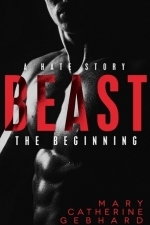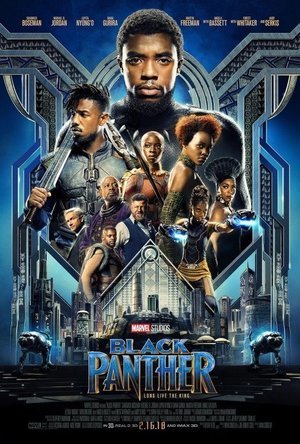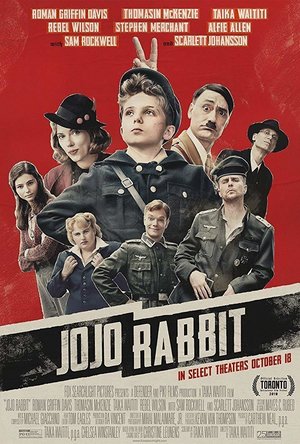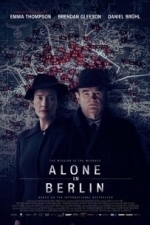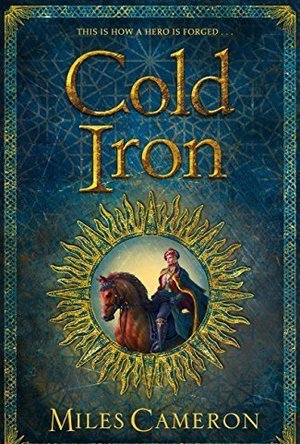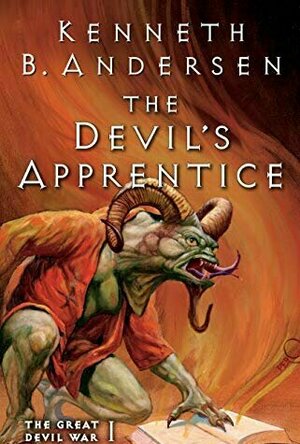Search
Search results
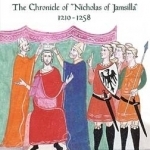
Frederick, Conrad and Manfred of Hohenstaufen, Kings of Sicily: The Chronicle of Nicholas of Jamsilla 1210-1258
Book
In the decade following the death of Frederick II in 1250, his sons Conrad and Manfred had to defend...
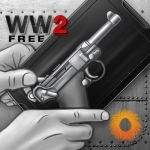
Weaphones WW2: Firearms Simulator Free
Games and Entertainment
App
Experience the weapons of World War II like never before. Weaphones WW2 Free Edition redefines what...

Weaphones WW2: Firearms Simulator
Games and Entertainment
App
Experience the weapons of World War II like never before. Weaphones WW2 Edition redefines what the...
Lee (2222 KP) rated Greyhound (2020) in Movies
Sep 2, 2020
Snore...
Based on a C.S. Forester novel The Good Shepherd, and a screenplay by Mr Tom Hanks himself, Greyhound is the latest movie to feature Hanks in the role of brave Captain, returning once more to World War II territory. Any hopes that this might be a return to the grand heights of Saving Private Ryan though are soon laid to rest.
Set in 1942, Hanks plays Captain Ernest Krause, responsible for one of only a handful of warships as they escort and protect an even larger number of merchant vessels making the journey across the Atlantic Ocean with vital supplies for England. They will be entering what’s known as ‘the black pit’ – a stretch of Ocean too far out at sea for any aerial cover to be provided by the countries on either side. For a few days, they will be on their own, and at the mercy of any German U-boats they may encounter.
Greyhound wastes no time in landing us right in the thick of it all, joining the crew as they enter the black pit, and sticking with them while they attempt to make it to relative safety on the other side. Obviously, it’s not long before a number of U-boats target the fleet of vessels and begin trying to pick them off in a tense game of cat and mouse at sea.
There is a LOT of nautical jargon in Greyhound and twenty minutes in, I was already feeling exhausted just trying to follow it all and gain any kind of enjoyment out of the movie. Despite throwing the occasion title up on screen to tell us which vessel we’re looking at out on the gloomy CGI seas, it’s also not always clear which ship is which, or who’s firing at who either. That attention to detailed dialogue really doesn’t let up one bit either, making what is only a 91 minute movie feel so much longer.
By throwing us straight into the action, we’re also given no time to learn or even care about any of the characters. Krause is only given a couple of brief flashback scenes, showing us with his partner two months earlier, played by Elizabeth Shue. Other than knowing this is his first Atlantic crossing, and that he is fully committed to the job in hand, refusing to eat any of the hot meals regularly brought to him by the ship’s cook, we’re provided very little information about our Captain.
The crew are also there just to fire off updates to their Captain and respond to his commands, providing no character development whatsoever for them either and giving us nothing to feel invested in, other than a desire for them all to make it safely to England.
With the focus of the movie entirely on the crew and setting of the Greyhound, we only hear from other characters via radio – calls for support from the other vessels, or psychological jaunts from the Germans on the U-boat. Again, by not giving us the viewpoint of any other side or vessel, it all makes for a very one dimensional and dull ride. Definitely not one of Tom Hanks finest.
Set in 1942, Hanks plays Captain Ernest Krause, responsible for one of only a handful of warships as they escort and protect an even larger number of merchant vessels making the journey across the Atlantic Ocean with vital supplies for England. They will be entering what’s known as ‘the black pit’ – a stretch of Ocean too far out at sea for any aerial cover to be provided by the countries on either side. For a few days, they will be on their own, and at the mercy of any German U-boats they may encounter.
Greyhound wastes no time in landing us right in the thick of it all, joining the crew as they enter the black pit, and sticking with them while they attempt to make it to relative safety on the other side. Obviously, it’s not long before a number of U-boats target the fleet of vessels and begin trying to pick them off in a tense game of cat and mouse at sea.
There is a LOT of nautical jargon in Greyhound and twenty minutes in, I was already feeling exhausted just trying to follow it all and gain any kind of enjoyment out of the movie. Despite throwing the occasion title up on screen to tell us which vessel we’re looking at out on the gloomy CGI seas, it’s also not always clear which ship is which, or who’s firing at who either. That attention to detailed dialogue really doesn’t let up one bit either, making what is only a 91 minute movie feel so much longer.
By throwing us straight into the action, we’re also given no time to learn or even care about any of the characters. Krause is only given a couple of brief flashback scenes, showing us with his partner two months earlier, played by Elizabeth Shue. Other than knowing this is his first Atlantic crossing, and that he is fully committed to the job in hand, refusing to eat any of the hot meals regularly brought to him by the ship’s cook, we’re provided very little information about our Captain.
The crew are also there just to fire off updates to their Captain and respond to his commands, providing no character development whatsoever for them either and giving us nothing to feel invested in, other than a desire for them all to make it safely to England.
With the focus of the movie entirely on the crew and setting of the Greyhound, we only hear from other characters via radio – calls for support from the other vessels, or psychological jaunts from the Germans on the U-boat. Again, by not giving us the viewpoint of any other side or vessel, it all makes for a very one dimensional and dull ride. Definitely not one of Tom Hanks finest.
Beckie Shelton (40 KP) rated Beast: The Beginning (Hate Story, #1) in Books
Feb 8, 2018
Reviewed By Beckie Bookworm
https://www.beckiebookworm.com/
<a href="http://s1376.photobucket.com/user/rosella1974/media/BookReview_zpsdq9da8x6.jpg.html"; target="_blank"><img src="http://i1376.photobucket.com/albums/ah5/rosella1974/BookReview_zpsdq9da8x6.jpg~original"; border="0" alt=" photo BookReview_zpsdq9da8x6.jpg"/></a>
🌟🌟🌟🌟Stars
I loved Beast: The Beginning (Hate Story, #1). From the minute I started reading This I was lost in another world, one of blood, hate and organised crime.
Where being bad was good and innocence is soon corrupted and lost forever.
So beast is about Frankie Notte and Anteros Drago a boss in the Pavoni family.
Frankie trades herself for her Papas life accompanying the beast to a fate unknown.
The Beast himself has every intention of selling Frankie to the Institute to be sold to the highest bidder.
But sometimes the best-laid plans can go awry, as is what happens here, leaving the beast with a slave that he's not quite sure what to do with.
Now, this was described as a dark read, and there is plenty of evidence of that darkness scattered throughout Beast, but behind closed doors, the Beast becomes increasingly fascinated with his new toy and there is at times a surprising gentleness to some of his interactions with Frankie.
He continues to try and keep up a front in front of his wolves as they start to lose confidence in their leader, questioning his actions towards an inconsequential Slave.
There is also a lot of secrets and intrigue running beneath the surface and rumours running amok concerning the Pavoni Princess, even Beast himself starts to listen and doubt what is real.
So dissecting our two main honchos here.
Anteros Drago/ Beast first, he's Ruthless, cruel, seemingly without mercy, he wants to break Frankie reducing her to nothing, he even initially tells her she is nothing.
His Black-heart is dark to the core, he lives for the job having spent years planning, with his wolves there rise to the top of the family from mere foot soldiers.
He appears to have no weaknesses. that is until Frankie slowly starts to thaw his ice-cold heart, not that you would major notice this as he's still a complete bastard to Frankie subjecting her to awful situations to teach her her place and generally playing mind games, belittling her at every turn while fighting his growing affections and deceiving himself regarding his feelings towards her.
Now Frankie herself, she is multi-faceted in regards to what she portrays outwardly.
Shes, not a worldly girl having been ill much of her teenage years, but From day one despite her apprehension, Frankie refuses to back down, sometimes even stupidly goading Beast, She grows so much in character throughout this story, seeming to get stronger with each new trial experienced, she also tries daily to fight her strange attraction towards the Beast that she swears she hates.
When we get the final satisfying reveal, setting us up for book two all players have been moved around into their new places almost like a chess match.
Or maybe even a new blood war.
You can see straight off that the next instalment is going to be very different in regards to changing tides.
So Really well done to the author I can't wait to get stuck into Beauty: The End (Hate Story, #2).
This may have been my first Mary Catherine Gebhard book, but definitely won't be my last.
It's been quite a while since I indulged myself in a good Dark romance and though this was not as dark as some I have read I found this a great addition to its genre.
So Give this a go if you like a good anti-hero romance, happy reading.
<a href="http://s1376.photobucket.com/user/rosella1974/media/images%205_zpskbahd7a0.jpg.html"; target="_blank"><img src="http://i1376.photobucket.com/albums/ah5/rosella1974/images%205_zpskbahd7a0.jpg~original"; border="0" alt=" photo images 5_zpskbahd7a0.jpg"/></a>
Reviewed By Beckie Bookworm
https://www.beckiebookworm.com/
https://www.facebook.com/beckiebookworm/ (less)
https://www.beckiebookworm.com/
<a href="http://s1376.photobucket.com/user/rosella1974/media/BookReview_zpsdq9da8x6.jpg.html"; target="_blank"><img src="http://i1376.photobucket.com/albums/ah5/rosella1974/BookReview_zpsdq9da8x6.jpg~original"; border="0" alt=" photo BookReview_zpsdq9da8x6.jpg"/></a>
🌟🌟🌟🌟Stars
I loved Beast: The Beginning (Hate Story, #1). From the minute I started reading This I was lost in another world, one of blood, hate and organised crime.
Where being bad was good and innocence is soon corrupted and lost forever.
So beast is about Frankie Notte and Anteros Drago a boss in the Pavoni family.
Frankie trades herself for her Papas life accompanying the beast to a fate unknown.
The Beast himself has every intention of selling Frankie to the Institute to be sold to the highest bidder.
But sometimes the best-laid plans can go awry, as is what happens here, leaving the beast with a slave that he's not quite sure what to do with.
Now, this was described as a dark read, and there is plenty of evidence of that darkness scattered throughout Beast, but behind closed doors, the Beast becomes increasingly fascinated with his new toy and there is at times a surprising gentleness to some of his interactions with Frankie.
He continues to try and keep up a front in front of his wolves as they start to lose confidence in their leader, questioning his actions towards an inconsequential Slave.
There is also a lot of secrets and intrigue running beneath the surface and rumours running amok concerning the Pavoni Princess, even Beast himself starts to listen and doubt what is real.
So dissecting our two main honchos here.
Anteros Drago/ Beast first, he's Ruthless, cruel, seemingly without mercy, he wants to break Frankie reducing her to nothing, he even initially tells her she is nothing.
His Black-heart is dark to the core, he lives for the job having spent years planning, with his wolves there rise to the top of the family from mere foot soldiers.
He appears to have no weaknesses. that is until Frankie slowly starts to thaw his ice-cold heart, not that you would major notice this as he's still a complete bastard to Frankie subjecting her to awful situations to teach her her place and generally playing mind games, belittling her at every turn while fighting his growing affections and deceiving himself regarding his feelings towards her.
Now Frankie herself, she is multi-faceted in regards to what she portrays outwardly.
Shes, not a worldly girl having been ill much of her teenage years, but From day one despite her apprehension, Frankie refuses to back down, sometimes even stupidly goading Beast, She grows so much in character throughout this story, seeming to get stronger with each new trial experienced, she also tries daily to fight her strange attraction towards the Beast that she swears she hates.
When we get the final satisfying reveal, setting us up for book two all players have been moved around into their new places almost like a chess match.
Or maybe even a new blood war.
You can see straight off that the next instalment is going to be very different in regards to changing tides.
So Really well done to the author I can't wait to get stuck into Beauty: The End (Hate Story, #2).
This may have been my first Mary Catherine Gebhard book, but definitely won't be my last.
It's been quite a while since I indulged myself in a good Dark romance and though this was not as dark as some I have read I found this a great addition to its genre.
So Give this a go if you like a good anti-hero romance, happy reading.
<a href="http://s1376.photobucket.com/user/rosella1974/media/images%205_zpskbahd7a0.jpg.html"; target="_blank"><img src="http://i1376.photobucket.com/albums/ah5/rosella1974/images%205_zpskbahd7a0.jpg~original"; border="0" alt=" photo images 5_zpskbahd7a0.jpg"/></a>
Reviewed By Beckie Bookworm
https://www.beckiebookworm.com/
https://www.facebook.com/beckiebookworm/ (less)
BankofMarquis (1832 KP) rated Black Panther (2018) in Movies
Feb 19, 2018
Inwardly focused SuperHero film mostly works.
THE BLACK PANTHER is the first entry in the Marvel Cinematic Universe that relies - predominantly - on characters (and actors) of color to carry it. Of the main characters, only 2 are Caucasian, the rest of the cast (including almost all of the supporting cast and the extras) - AND the Director are people of color. This has, rightfully so, created a "buzz" about the significance of this. It is a watershed moment for SuperHero films (much like last year's WONDER WOMAN was a watershed for a female led SuperHero film). But the question remains - is it a good film?
The answer: Good Enough.
Diving deeper into the character/hero T'Challa/Black Panther (Chadwick Boseman) who was first introduced in CAPTAIN AMERICA: CIVIL WAR. In this film, we learn more about the backstory of this man/character as well as the world in which he lives and the burdens he bears. It also, interestingly enough, pretty much ignores the rest of the Marvel Cinematic Universe for much of it's 2 hour 14 minute timeline. It mostly concerns itself with interior issues in the hidden kingdom of Wakanda and I think this tactic is a welcome relief from the giant, CGI-laden, characters-heavy Marvel films of recent memory.
Director/Writer Ryan Coogler (CREED/FRUITVALE STATION) decides to focus the attention of this film inward, rather than outward and we are rewarded with a rich, Shakespearean family drama that works because of it's simplicity.
Much of the effectiveness is due to the charismatic cast that has been drawn to this picture because of the significance of it as well as the richness of the characters they inhabit. Bozeman is regal and strong in the title role - no hint of the suffering, "I don't want this" SuperHero angst so often seen in these types of film. Academy Award winner Lupito Nyong'o joins in just as strong and independently as Nakia a "Spy" and erstwhile romantic foil for T'Challa - though Coogler is wise to avoid the "will they/won't they" cliche as well as eliminates, entirely, the "damsel in distress" subplot that would have been so tempting.
Helping these two out are a veritable "who's who" of actors of color - Angela Bassett, Forrest Whitaker, current Best Actor nominee Daniel Kaluuya and Sterling K. Brown - all turn out for fun (albeit brief) turns where each one of them gets a chance to show what they can do. Special notice should be made to Danai Gurira (TV's kick-ass Michonne in THE WALKING DEAD) as Okoye - T'Challa's chief general and bodyguard who must choose duty over honor (or does she) and, especially, Letitia Wright as T'Challa's younger, wise-cracking sister - who also happens to be the "Q" of this film. She jumped off the screen and shone brightly (but not so bright as to wash things out) in every scene she was in.
And...of course...there is Coogler favorite Michael B. Jordan (he's been in all of Coogler's major motion picture) as the villain of the piece - Erik Killmonger (the name says it all). Jordan does a nice job of bringing 3 dimensions to a character that was written a little too 2 dimension-ally, if you ask me. This character could have just been an "angry young man" cliche, but with Jordan, he becomes something much, much more.
This being a Marvel SuperHero film, the Special Effects are terrific, showing a highly secretive, highly technolized Wakanda that is hidden beneath the surface.
Is it a perfect film? Well...no. This is, in essence, a "family drama" with some hi-tech action scenes and the obligatory "two armies fighting" finale, and while the acting is good enough to hold interest throughout, I would have liked to have seen a little more action thrown in.
But...ignoring the rest of the Marvel Cinematic Universe was a good move - as was casting such strong, believable and likeable film actors.
Letter Grade: A-
8 (out of 10) stars and you can take that to the Bank(ofMarquis)
The answer: Good Enough.
Diving deeper into the character/hero T'Challa/Black Panther (Chadwick Boseman) who was first introduced in CAPTAIN AMERICA: CIVIL WAR. In this film, we learn more about the backstory of this man/character as well as the world in which he lives and the burdens he bears. It also, interestingly enough, pretty much ignores the rest of the Marvel Cinematic Universe for much of it's 2 hour 14 minute timeline. It mostly concerns itself with interior issues in the hidden kingdom of Wakanda and I think this tactic is a welcome relief from the giant, CGI-laden, characters-heavy Marvel films of recent memory.
Director/Writer Ryan Coogler (CREED/FRUITVALE STATION) decides to focus the attention of this film inward, rather than outward and we are rewarded with a rich, Shakespearean family drama that works because of it's simplicity.
Much of the effectiveness is due to the charismatic cast that has been drawn to this picture because of the significance of it as well as the richness of the characters they inhabit. Bozeman is regal and strong in the title role - no hint of the suffering, "I don't want this" SuperHero angst so often seen in these types of film. Academy Award winner Lupito Nyong'o joins in just as strong and independently as Nakia a "Spy" and erstwhile romantic foil for T'Challa - though Coogler is wise to avoid the "will they/won't they" cliche as well as eliminates, entirely, the "damsel in distress" subplot that would have been so tempting.
Helping these two out are a veritable "who's who" of actors of color - Angela Bassett, Forrest Whitaker, current Best Actor nominee Daniel Kaluuya and Sterling K. Brown - all turn out for fun (albeit brief) turns where each one of them gets a chance to show what they can do. Special notice should be made to Danai Gurira (TV's kick-ass Michonne in THE WALKING DEAD) as Okoye - T'Challa's chief general and bodyguard who must choose duty over honor (or does she) and, especially, Letitia Wright as T'Challa's younger, wise-cracking sister - who also happens to be the "Q" of this film. She jumped off the screen and shone brightly (but not so bright as to wash things out) in every scene she was in.
And...of course...there is Coogler favorite Michael B. Jordan (he's been in all of Coogler's major motion picture) as the villain of the piece - Erik Killmonger (the name says it all). Jordan does a nice job of bringing 3 dimensions to a character that was written a little too 2 dimension-ally, if you ask me. This character could have just been an "angry young man" cliche, but with Jordan, he becomes something much, much more.
This being a Marvel SuperHero film, the Special Effects are terrific, showing a highly secretive, highly technolized Wakanda that is hidden beneath the surface.
Is it a perfect film? Well...no. This is, in essence, a "family drama" with some hi-tech action scenes and the obligatory "two armies fighting" finale, and while the acting is good enough to hold interest throughout, I would have liked to have seen a little more action thrown in.
But...ignoring the rest of the Marvel Cinematic Universe was a good move - as was casting such strong, believable and likeable film actors.
Letter Grade: A-
8 (out of 10) stars and you can take that to the Bank(ofMarquis)
Lucy Buglass (45 KP) rated Jojo Rabbit (2019) in Movies
Oct 14, 2019
The premise of Jojo Rabbit is a bold one, and something that could have very easily been executed terribly on-screen.
Whilst you might feel some apprehension about the concept of a 10-year-old boy who has Hitler as an imaginary friend, Taika Waititi has turned it into something brilliant and poignant.
As mentioned above, the film follows Johannes ‘Jojo’ Betzler, who lives in Nazi Germany. He’s a fanatic and is driven by his desire to serve Adolf Hitler in the German army during World War II, even joining a Hitler Youth Camp which is run by Captain Klenzendorf (Sam Rockwell).
Jojo is unlike any other child protagonist I’ve seen, because it’s easy to have very mixed feelings about who he is as a person. He’s a child and his everyday behaviour is indicative of someone who lacks maturity, resulting in some laugh out loud moments.
However, a lot of what he says happens to be horrendous insults towards the Jewish community. He’s fuelled by a love of Hitler (even going as far as to describe him as his ‘best friend’).
Throughout the film, he imagines scenarios in which Hitler is there with him, such as when he’s looking in the mirror and giving himself a pep-talk.
The strength of Jojo Rabbit‘s protagonist is a testament to actor Roman Griffin Davis, and I found it hard to believe that this was his first ever film performance. He’s funny, flawed, and a very well-rounded character brilliantly brought to life.
As for Jojo’s imaginary Hitler, he’s hysterically funny and not at all how you’d imagine the real man to be. Played brilliantly by director Taika Waititi, he is a caricature of a deplorable historical figure, and fuels Jojo’s delusions of how wonderful he is.
He’s simply someone’s interpretation of a political leader, created by a child who has been brainwashed into believing Nazi propaganda by adults in his life.
This bubbly oversimplification of a dictator is what you’d expect from a naive child, who isn’t fully aware of the atrocities around him.
The fact Taika Waititi plays this version of Hitler feels important, because he’s mocking him in the best possible way. As a Jewish man, it feels very appropriate that he criticises Hitler’s ideology through his satirical performance. It was brilliant.
Adding jokes to such a horrific situation is difficult, but this is where Jojo Rabbit really excels. The balance between humour and gut-punching reality checks is beautifully done, and there were times when I wasn’t sure whether my tears were from laughing or because I was genuinely sad at what I’d just seen.
Relationships are an important part of the film, particularly the one between Jojo and his mother Rosie (Scarlett Johansson). However, this becomes strained when he finds out that his mother is hiding a young Jewish woman in their home.
Jojo’s meeting with Elsa Korr (Thomasin McKenzie) is central to the story and gives us a real insight into the horrific treatment of Jewish people during this period, and the extreme lengths they’d go to keep themselves safe.
Despite Elsa’s life constantly being in jeopardy, she’s very sassy and gives young Jojo a run for his money once the two meet. The way the two characters bounce off each other is exceptional, and again, you’ll laugh and cry in equal measure.
I was also impressed by some brief appearances in the film such as Rebel Wilson as Fraulein Rahm, who I found hilarious in this film. I must admit I’m not always a fan of her work, but here she really delivered.
Stephen Merchant as Captain Deertz and Archie Yates as young Yorki are also worthy of praise, as every time they were on screen I found them delightful to watch. Much like Roman Griffin Davis, this was Archie’s first film, and he stole the show every time he was in a scene.
Jojo Rabbit is, simply put, political satire at its finest. As a result of this, it’s an emotional rollercoaster and one that I am excited to revisit whenever I get the chance.
It’s darkly funny with an important overall message of confronting ideologies, and I’d urge you to seek it out ASAP.
Whilst you might feel some apprehension about the concept of a 10-year-old boy who has Hitler as an imaginary friend, Taika Waititi has turned it into something brilliant and poignant.
As mentioned above, the film follows Johannes ‘Jojo’ Betzler, who lives in Nazi Germany. He’s a fanatic and is driven by his desire to serve Adolf Hitler in the German army during World War II, even joining a Hitler Youth Camp which is run by Captain Klenzendorf (Sam Rockwell).
Jojo is unlike any other child protagonist I’ve seen, because it’s easy to have very mixed feelings about who he is as a person. He’s a child and his everyday behaviour is indicative of someone who lacks maturity, resulting in some laugh out loud moments.
However, a lot of what he says happens to be horrendous insults towards the Jewish community. He’s fuelled by a love of Hitler (even going as far as to describe him as his ‘best friend’).
Throughout the film, he imagines scenarios in which Hitler is there with him, such as when he’s looking in the mirror and giving himself a pep-talk.
The strength of Jojo Rabbit‘s protagonist is a testament to actor Roman Griffin Davis, and I found it hard to believe that this was his first ever film performance. He’s funny, flawed, and a very well-rounded character brilliantly brought to life.
As for Jojo’s imaginary Hitler, he’s hysterically funny and not at all how you’d imagine the real man to be. Played brilliantly by director Taika Waititi, he is a caricature of a deplorable historical figure, and fuels Jojo’s delusions of how wonderful he is.
He’s simply someone’s interpretation of a political leader, created by a child who has been brainwashed into believing Nazi propaganda by adults in his life.
This bubbly oversimplification of a dictator is what you’d expect from a naive child, who isn’t fully aware of the atrocities around him.
The fact Taika Waititi plays this version of Hitler feels important, because he’s mocking him in the best possible way. As a Jewish man, it feels very appropriate that he criticises Hitler’s ideology through his satirical performance. It was brilliant.
Adding jokes to such a horrific situation is difficult, but this is where Jojo Rabbit really excels. The balance between humour and gut-punching reality checks is beautifully done, and there were times when I wasn’t sure whether my tears were from laughing or because I was genuinely sad at what I’d just seen.
Relationships are an important part of the film, particularly the one between Jojo and his mother Rosie (Scarlett Johansson). However, this becomes strained when he finds out that his mother is hiding a young Jewish woman in their home.
Jojo’s meeting with Elsa Korr (Thomasin McKenzie) is central to the story and gives us a real insight into the horrific treatment of Jewish people during this period, and the extreme lengths they’d go to keep themselves safe.
Despite Elsa’s life constantly being in jeopardy, she’s very sassy and gives young Jojo a run for his money once the two meet. The way the two characters bounce off each other is exceptional, and again, you’ll laugh and cry in equal measure.
I was also impressed by some brief appearances in the film such as Rebel Wilson as Fraulein Rahm, who I found hilarious in this film. I must admit I’m not always a fan of her work, but here she really delivered.
Stephen Merchant as Captain Deertz and Archie Yates as young Yorki are also worthy of praise, as every time they were on screen I found them delightful to watch. Much like Roman Griffin Davis, this was Archie’s first film, and he stole the show every time he was in a scene.
Jojo Rabbit is, simply put, political satire at its finest. As a result of this, it’s an emotional rollercoaster and one that I am excited to revisit whenever I get the chance.
It’s darkly funny with an important overall message of confronting ideologies, and I’d urge you to seek it out ASAP.
Bob Mann (459 KP) rated Alone in Berlin (2017) in Movies
Sep 29, 2021
Small Rebellions.
Once again, World War II turns up another true story of quiet valour to turn into a motion picture. At a time when Trump is pontificating about so called “fake news”, here is a timely tale from history which centres on the battle against genuinely fake news: the Nazi propaganda machine.
After losing their only son in the French campaign, Berliners Otto (Brendan Gleeson,”Harry Potter and the Goblet of Fire”) and Anna (Emma Thompson, “Saving Mr Banks“) turn against the regime and in repeated acts of rebellion Otto laboriously hand writes subversive postcards to leave in office blocks around Berlin.
Resistance is futile. Otto (Brendan Gleeson) and Anna (Emma Thompson) out on a new mission.
Out to catch him is local police investigator Escherich (Daniel Brühl) but in an age before CCTV that’s no easy task and with increasing SS pressure the stakes for Escherich steadily increase. For Otto and Anna, the stress is there but both are resigned to their fate: with their son stolen from them for an unjust cause they are an island of indifference in an unholy land. Both are ‘alone in Berlin’.
Daniel Brühl as police detective Escherich getting more than he bargained for from the SS.
After 70 years it still chills the blood to see German locations decked out in Nazi regalia, but one of the joys of this film is this rendering of life in wartime Berlin: starting with jubilation at German progress prior to D-Day and turning to despair and genuine danger as the tide turns towards 1945. In a pretty bleak film there are touches of black comedy now and then: Otto’s carpentry company is being encouraged “by the Fuhrer” to double and triple their output… of coffins.
A (very clean) Berlin, decked out with Nazi regalia.
More joy comes from the star turns of Gleeson and Thompson, both of who deliver on their emotionally challenging roles. Gleeson in particular makes a very believable German with a sour demeanor and a steely determination. But the star acting turn for me goes to the wonderful Daniel Brühl (“Rush“) as the tormented police detective, bullied into an ethical corner by the SS. The finale of the film – whilst not seeming quite believable – makes for a nicely unexpected twist.
The Nazi Womens’ League out on another fund-raising sweep, providing Thompson with one of her best scenes in the film with an Oberführer’s wife.
Based on a novel by Hans Fallada, the lead writing credits for the piece are shared between Achim von Borries and the director Vincent Perez – in a rare directorial outing for the Swiss actor. The script exudes a melancholic gloom and at times expresses beautifully both the grief and love shared by this older couple. But some of the dialogue needs more work and we don’t see enough of Thompson in the early part of the film where her motivations should be being developed. This rather comes down to a lack of focus by the director. While the primary story of the card distribution is slight, it is compelling and a detour into a sub-story about an old Jewish lodger living upstairs is unnecessary and detracts from the overall story arc. I would have far preferred if the running time had been a tight 90 minutes just focused on Otto’s mission. One final comment on the script: did I mishear that Anna claimed to have a 6 year old child during an air raid scene? I know Emma Thompson looks great for her age, but….
Otto and Elise Hampel – the real life characters on which the film’s Otto and Anna Quangel were based.
I can’t finish this without commending the beautiful piano score of Alexandre Desplat. From the first note I knew it was him – he has such a characteristic style – and his clever use of the score complements the film exquisitely. “Small” films like this tend to rather disappear into the woodwork for Oscar consideration, but here’s a soundtrack that I think should be considered: (but what do I know… when “Nocturnal Animals” wasn’t even nominated in one of the Oscar crimes of the century!).
In summary, I found this a thoughtful and thought-provoking film, that – despite some of the mean reviews I’ve seen – I thought was well crafted and with excellent production design by Jean-Vincent Puzos (“Amour”). It will be particularly appreciated by older audiences looking for an untold story from the war, and by all lovers of fine acting performances by the three leads.
After losing their only son in the French campaign, Berliners Otto (Brendan Gleeson,”Harry Potter and the Goblet of Fire”) and Anna (Emma Thompson, “Saving Mr Banks“) turn against the regime and in repeated acts of rebellion Otto laboriously hand writes subversive postcards to leave in office blocks around Berlin.
Resistance is futile. Otto (Brendan Gleeson) and Anna (Emma Thompson) out on a new mission.
Out to catch him is local police investigator Escherich (Daniel Brühl) but in an age before CCTV that’s no easy task and with increasing SS pressure the stakes for Escherich steadily increase. For Otto and Anna, the stress is there but both are resigned to their fate: with their son stolen from them for an unjust cause they are an island of indifference in an unholy land. Both are ‘alone in Berlin’.
Daniel Brühl as police detective Escherich getting more than he bargained for from the SS.
After 70 years it still chills the blood to see German locations decked out in Nazi regalia, but one of the joys of this film is this rendering of life in wartime Berlin: starting with jubilation at German progress prior to D-Day and turning to despair and genuine danger as the tide turns towards 1945. In a pretty bleak film there are touches of black comedy now and then: Otto’s carpentry company is being encouraged “by the Fuhrer” to double and triple their output… of coffins.
A (very clean) Berlin, decked out with Nazi regalia.
More joy comes from the star turns of Gleeson and Thompson, both of who deliver on their emotionally challenging roles. Gleeson in particular makes a very believable German with a sour demeanor and a steely determination. But the star acting turn for me goes to the wonderful Daniel Brühl (“Rush“) as the tormented police detective, bullied into an ethical corner by the SS. The finale of the film – whilst not seeming quite believable – makes for a nicely unexpected twist.
The Nazi Womens’ League out on another fund-raising sweep, providing Thompson with one of her best scenes in the film with an Oberführer’s wife.
Based on a novel by Hans Fallada, the lead writing credits for the piece are shared between Achim von Borries and the director Vincent Perez – in a rare directorial outing for the Swiss actor. The script exudes a melancholic gloom and at times expresses beautifully both the grief and love shared by this older couple. But some of the dialogue needs more work and we don’t see enough of Thompson in the early part of the film where her motivations should be being developed. This rather comes down to a lack of focus by the director. While the primary story of the card distribution is slight, it is compelling and a detour into a sub-story about an old Jewish lodger living upstairs is unnecessary and detracts from the overall story arc. I would have far preferred if the running time had been a tight 90 minutes just focused on Otto’s mission. One final comment on the script: did I mishear that Anna claimed to have a 6 year old child during an air raid scene? I know Emma Thompson looks great for her age, but….
Otto and Elise Hampel – the real life characters on which the film’s Otto and Anna Quangel were based.
I can’t finish this without commending the beautiful piano score of Alexandre Desplat. From the first note I knew it was him – he has such a characteristic style – and his clever use of the score complements the film exquisitely. “Small” films like this tend to rather disappear into the woodwork for Oscar consideration, but here’s a soundtrack that I think should be considered: (but what do I know… when “Nocturnal Animals” wasn’t even nominated in one of the Oscar crimes of the century!).
In summary, I found this a thoughtful and thought-provoking film, that – despite some of the mean reviews I’ve seen – I thought was well crafted and with excellent production design by Jean-Vincent Puzos (“Amour”). It will be particularly appreciated by older audiences looking for an untold story from the war, and by all lovers of fine acting performances by the three leads.
Ross (3284 KP) rated Cold Iron (Masters & Mages #1) in Books
Jan 22, 2019
Elaborate prose and an unsettling amount of "wait and see" damaged my enjoyment
This book feels like your standard coming-of-age fantasy - young man from a simple village finds himself in the big city destined for greatness and surrounds himself with strong watchers while he grows into his potential. It is that and it is so much more.
The story that is told is how Aranthur, this young man (selected from his village to attend the big city university) finds himself in the midst of conflict and significant events in the empire's changing status. The idea of fate dictating that this one man would be at the centre of things (see Wheel of Time) is not one that is explored here. While it is hinted at (he is frequently told off for ending up in unusual circumstances), it isn't overly laboured. Nobody tells him he was chosen or anything like that. Instead he gradually learns that he has found himself at the centre of political intrigue, plotting, counter-plotting, conspiracies and war.
This book is not about Aranthur. He is just the focal point of the book, the story is so much bigger than him. This meant it did at times become a little hard to take that he always just happened to meet the right person, go to the right place at the right time in order to witness or participate in a number of significant plot events. In hindsight, this is largely all explained as some hidden agenda and him being put in those places to make those decisions but at the time it was a little jarring.
The narrative is more akin to Robert Jordan than many contemporary writers - so much overly elaborate description of people, places, clothes, horses, weapons etc. At times this adds to the reading experience but I found it over-used and made the book feel like a much longer read (I was shocked when I found out it was just under 450 pages - it reads like around 700). Also, so much of the narrative is in either italics (to show it is a magic/majick/magik delete as appropriate) or is in some odd variation of French ("gonne" for gun, "quaveh" for coffee etc) to become irritating. At times the book is more like a decent fantasy tale or conspiracy and intrigue which has been edited by a historical re-enactment nut. Given this is fictional and the world is the author's to do with as he wishes, forcing some historical accuracy at the expense of reader enjoyment seemed an odd decision to make.
The magical system seems fairly standard fantasy fayre, albeit it is not described or explored in any detail, people just suddenly do things which haven't previously been mentioned. A large aspect of the book is Aranthur's being chosen to translate an ancient text to decode the magical secrets hidden there. I think in all he decodes three of these, and uses them, but there is no mention of them until he has to use them in a fight. It could just be that I have been reading a lot of LitRPG recently, where every spell is described in intimate detail and its uses are discussed way in advance of being needed in combat, but I felt like it was something of an afterthought or rescue from a plot dead-end ("oh sod it, say he done a magic").
While I did enjoy this book on the whole, the narrative style and the focus being on clothes rather than describing the interesting aspects of the world were to its detriment. Also, the book is written as two "books" (chapters), the first "book" covers around 80% and all in one long chapter without breaks. To my mind, ending there would have sufficed. The final 20% in "book 2" felt like part epilogue, part sequel and should maybe have been split as such.
My advice to anyone reading this, is to suspend disbelief that little bit further and trust that things do largely get explained satisfactorily before the end.
The story that is told is how Aranthur, this young man (selected from his village to attend the big city university) finds himself in the midst of conflict and significant events in the empire's changing status. The idea of fate dictating that this one man would be at the centre of things (see Wheel of Time) is not one that is explored here. While it is hinted at (he is frequently told off for ending up in unusual circumstances), it isn't overly laboured. Nobody tells him he was chosen or anything like that. Instead he gradually learns that he has found himself at the centre of political intrigue, plotting, counter-plotting, conspiracies and war.
This book is not about Aranthur. He is just the focal point of the book, the story is so much bigger than him. This meant it did at times become a little hard to take that he always just happened to meet the right person, go to the right place at the right time in order to witness or participate in a number of significant plot events. In hindsight, this is largely all explained as some hidden agenda and him being put in those places to make those decisions but at the time it was a little jarring.
The narrative is more akin to Robert Jordan than many contemporary writers - so much overly elaborate description of people, places, clothes, horses, weapons etc. At times this adds to the reading experience but I found it over-used and made the book feel like a much longer read (I was shocked when I found out it was just under 450 pages - it reads like around 700). Also, so much of the narrative is in either italics (to show it is a magic/majick/magik delete as appropriate) or is in some odd variation of French ("gonne" for gun, "quaveh" for coffee etc) to become irritating. At times the book is more like a decent fantasy tale or conspiracy and intrigue which has been edited by a historical re-enactment nut. Given this is fictional and the world is the author's to do with as he wishes, forcing some historical accuracy at the expense of reader enjoyment seemed an odd decision to make.
The magical system seems fairly standard fantasy fayre, albeit it is not described or explored in any detail, people just suddenly do things which haven't previously been mentioned. A large aspect of the book is Aranthur's being chosen to translate an ancient text to decode the magical secrets hidden there. I think in all he decodes three of these, and uses them, but there is no mention of them until he has to use them in a fight. It could just be that I have been reading a lot of LitRPG recently, where every spell is described in intimate detail and its uses are discussed way in advance of being needed in combat, but I felt like it was something of an afterthought or rescue from a plot dead-end ("oh sod it, say he done a magic").
While I did enjoy this book on the whole, the narrative style and the focus being on clothes rather than describing the interesting aspects of the world were to its detriment. Also, the book is written as two "books" (chapters), the first "book" covers around 80% and all in one long chapter without breaks. To my mind, ending there would have sufficed. The final 20% in "book 2" felt like part epilogue, part sequel and should maybe have been split as such.
My advice to anyone reading this, is to suspend disbelief that little bit further and trust that things do largely get explained satisfactorily before the end.
Ivana A. | Diary of Difference (1171 KP) rated The Devil's Apprentice (The Great Devil War, #1) in Books
Feb 3, 2020
<a href="https://diaryofdifference.com/">Blog</a>; | <a href="https://www.facebook.com/diaryofdifference/">Facebook</a>; | <a href="https://twitter.com/DiaryDifference">Twitter</a>; | <a href="https://www.instagram.com/diaryofdifference/">Instagram</a>; | <a href="https://www.pinterest.co.uk/diaryofdifference/pins/">Pinterest</a>;
#1 <a href="https://www.goodreads.com/review/show/2695415697">The Devil's Apprentice</a> - ★★★★★
#2 <a href="https://www.goodreads.com/review/show/2695416625">The Die of Death</a> - ★★★★★
<img src="https://i1.wp.com/diaryofdifference.com/wp-content/uploads/2019/03/New-blog-banner-9.png?w=560&ssl=1"/>;
<b><i>Possibly the best Young-Adult Fantasy I have read this year. Enter and discover Hell and see how it works, meet the Devil and learn why we need evil in order to be good! A fantastic story and great adventures await in Hell. Read this at your own risk!</i></b>
I was lucky enough to receive the first two books of The Great Devil War Series by the author himself. I haven’t heard about Kenneth B. Andersen before, but after reading the synopsis, I knew I had to have these books - I knew I had to read the whole series.
Meet Phillip - he is a good boy. An angel. He helps his mum with the chores, he helps his friends with their homework, he loves and takes care of animals, and he never lies. But one day, he is sent to Hell by mistake, and he has to become the Devil’s Apprentice. The Devil is ill and before he dies he has to make sure to teach Phillip the worst tricks in Hell’s history, and teach him to be evil - but Phillip is simply terrible at being bad and keeps failing all his tests.
With very little time left for the Devil to teach Phillip everything, Phillip begins to make friends and enemies in this place. And on top of it all - someone might want the Devil’s throne for themselves…
I loved this book so much! The best thing about it is the setting. We enter a world and we get to see Hell through Phillip’s eyes. Everyone has their own place and role, there is a system of how they designate people and where they go - we meet Death and see the process of how he chooses who dies, and how they place people in either Heaven or Hell, depending on the actions people take throughout their lives, and also, how the Devil throws the dice as well.
Phillip is a typical boy, who goes to school, tries to be a good boy wherever he can. I loved Phillip’s character and could easily relate to him. When he gets in an unusual place, he begins to wonder, and discover and explore, and the way the author writes the scenes just keep you engaged in the book and you can’t put it down before you know what happens next.
The world in Hell is full of adventures, different creatures, lots of scenes where we can’t help but wonder what does ‘’EVIL’’ actually mean, and is it really true that we do need a little bit of evil in order to see the good in ourselves and others? Many moral messages are discovered through Phillip’s adventures, and I loved seeing him grow throughout the book. He keeps learning things and he kept growing. Do you really need to be evil to succeed in Hell?
I am so glad I have read this book, and I can’t wait to read the second book. <b>If you enjoy Young-Adult fantasy, and if you even enjoyed Dante’s Inferno, this book will probably be something you might enjoy. It will make you giggle, and even make you wonder, and it will leave you restless with all the adventures, page after page.</b>
Until next time! x
<a href="https://diaryofdifference.com/">Blog</a>; | <a href="https://www.facebook.com/diaryofdifference/">Facebook</a>; | <a href="https://twitter.com/DiaryDifference">Twitter</a>; | <a href="https://www.instagram.com/diaryofdifference/">Instagram</a>; | <a href="https://www.pinterest.co.uk/diaryofdifference/pins/">Pinterest</a>;
#1 <a href="https://www.goodreads.com/review/show/2695415697">The Devil's Apprentice</a> - ★★★★★
#2 <a href="https://www.goodreads.com/review/show/2695416625">The Die of Death</a> - ★★★★★
<img src="https://i1.wp.com/diaryofdifference.com/wp-content/uploads/2019/03/New-blog-banner-9.png?w=560&ssl=1"/>;
<b><i>Possibly the best Young-Adult Fantasy I have read this year. Enter and discover Hell and see how it works, meet the Devil and learn why we need evil in order to be good! A fantastic story and great adventures await in Hell. Read this at your own risk!</i></b>
I was lucky enough to receive the first two books of The Great Devil War Series by the author himself. I haven’t heard about Kenneth B. Andersen before, but after reading the synopsis, I knew I had to have these books - I knew I had to read the whole series.
Meet Phillip - he is a good boy. An angel. He helps his mum with the chores, he helps his friends with their homework, he loves and takes care of animals, and he never lies. But one day, he is sent to Hell by mistake, and he has to become the Devil’s Apprentice. The Devil is ill and before he dies he has to make sure to teach Phillip the worst tricks in Hell’s history, and teach him to be evil - but Phillip is simply terrible at being bad and keeps failing all his tests.
With very little time left for the Devil to teach Phillip everything, Phillip begins to make friends and enemies in this place. And on top of it all - someone might want the Devil’s throne for themselves…
I loved this book so much! The best thing about it is the setting. We enter a world and we get to see Hell through Phillip’s eyes. Everyone has their own place and role, there is a system of how they designate people and where they go - we meet Death and see the process of how he chooses who dies, and how they place people in either Heaven or Hell, depending on the actions people take throughout their lives, and also, how the Devil throws the dice as well.
Phillip is a typical boy, who goes to school, tries to be a good boy wherever he can. I loved Phillip’s character and could easily relate to him. When he gets in an unusual place, he begins to wonder, and discover and explore, and the way the author writes the scenes just keep you engaged in the book and you can’t put it down before you know what happens next.
The world in Hell is full of adventures, different creatures, lots of scenes where we can’t help but wonder what does ‘’EVIL’’ actually mean, and is it really true that we do need a little bit of evil in order to see the good in ourselves and others? Many moral messages are discovered through Phillip’s adventures, and I loved seeing him grow throughout the book. He keeps learning things and he kept growing. Do you really need to be evil to succeed in Hell?
I am so glad I have read this book, and I can’t wait to read the second book. <b>If you enjoy Young-Adult fantasy, and if you even enjoyed Dante’s Inferno, this book will probably be something you might enjoy. It will make you giggle, and even make you wonder, and it will leave you restless with all the adventures, page after page.</b>
Until next time! x
<a href="https://diaryofdifference.com/">Blog</a>; | <a href="https://www.facebook.com/diaryofdifference/">Facebook</a>; | <a href="https://twitter.com/DiaryDifference">Twitter</a>; | <a href="https://www.instagram.com/diaryofdifference/">Instagram</a>; | <a href="https://www.pinterest.co.uk/diaryofdifference/pins/">Pinterest</a>;

